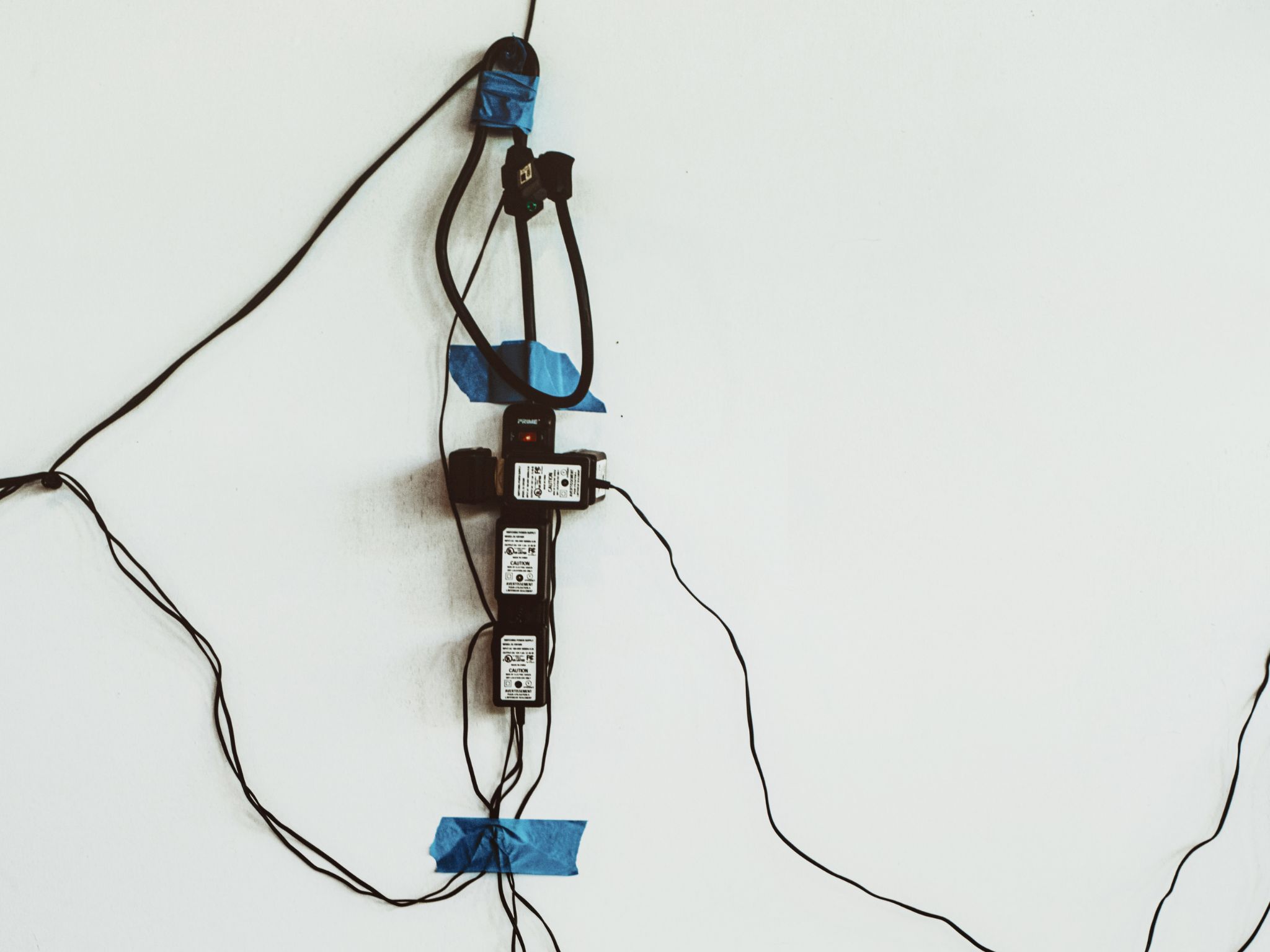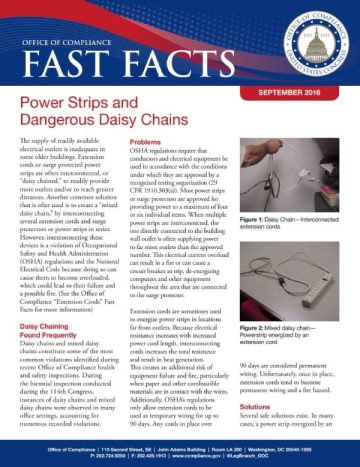The supply of readily available electrical outlets is inadequate in some older buildings. Extension cords or surge protected power strips are often interconnected, or “daisy chained,” to readily provide more outlets and/or to reach greater distances. Another common solution that is often used is to create a “mixed daisy chain,” by interconnecting several extension cords and surge protectors or power strips in series. However, interconnecting these devices is a violation of Occupational Safety and Health Administration (OSHA) regulations and the National Electrical Code because doing so can cause them to become overloaded, which could lead to their failure and a possible fire. (See the Office of Compliance “Extension Cords” Fast Facts for more information).
Daisy Chaining Found Frequently
Daisy chains and mixed daisy chains constitute some of the most common violations identified during recent Office of Compliance health and safety inspections. During the biennial inspection conducted during the 114th Congress, instances of daisy chains and mixed daisy chains were observed in many office settings, accounting for numerous recorded violations.
Problems
OSHA regulations require that conductors and electrical equipment be used in accordance with the conditions under which they are approved by a recognized testing organization (29 CFR 1910.303(a)). Most power strips or surge protectors are approved for providing power to a maximum of four or six individual items. When multiple power strips are interconnected, the one directly connected to the building wall outlet is often supplying power to far more outlets than the approved number. This electrical current overload can result in a fire or can cause a circuit breaker to trip, de-energizing computers and other equipment throughout the area that are connected to the surge protector.
Extension cords are sometimes used to energize power strips in locations far from outlets. Because electrical resistance increases with increased power cord length, interconnecting cords increases the total resistance and result in heat generation. This creates an additional risk of equipment failure and fire, particularly when paper and other combustible materials are in contact with the wires. Additionally, OSHA’s regulations only allow extension cords to be used as temporary wiring for up to 90 days. Any cords in place over 90 days are considered permanent wiring. Unfortunately, once in place, extension cords tend to become permanent wiring and a fire hazard.

